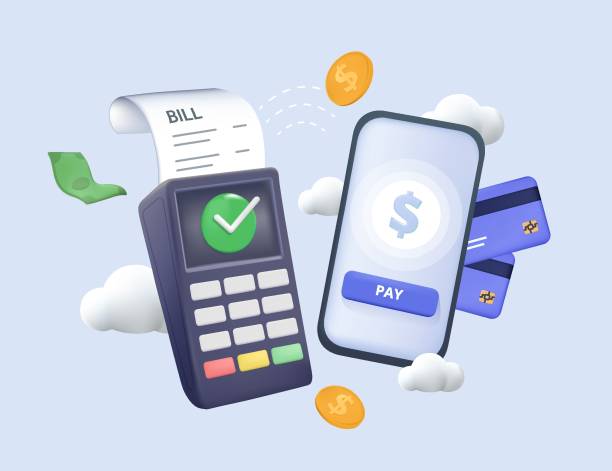As an online seller, you know shipping orders is a huge part of running your business. But what happens when a customer across the world wants to buy your product? Global fulfillment may seem daunting, but it doesn’t have to be. In this article, we’ll walk you through everything you need to know about shipping your products worldwide. From picking the right fulfillment provider to navigating customs and duties, we’ll cover the end-to-end process and pro tips for making global ecommerce fulfillment a breeze. Selling internationally can help you reach new customers and significantly grow your business. So don’t let shipping logistics stand in your way. Read on to learn how to confidently ship your products anywhere in the world.
Understanding Global Ecommerce Fulfillment

Choosing a Fulfillment Center
When selling products worldwide, you’ll need to partner with a global fulfillment center that can ship to any destination. Consider centers with locations on multiple continents so you can get closer to customers. Also look for centers experienced in international shipping regulations to ensure quick, hassle-free delivery.
Offering Competitive Shipping Rates
Customers expect reasonable shipping rates and delivery times, no matter where they are. Negotiate the best rates you can with your fulfillment partner to keep costs low. You may also want to subsidize shipping for large or premium orders to improve customer satisfaction.
Managing Inventory Across Borders
Storing inventory in multiple locations around the world allows for faster delivery to customers. However, it also means more complexity in managing stock levels and distribution. Look for a fulfillment center with a robust inventory management system that gives you visibility and control over products in warehouses on different continents.
Adapting to Local Requirements
Every country has its own unique regulations around product categories, labeling, packaging, and more. Work with a fulfillment provider that stays up to date with international compliance standards and can adapt operations to meet local requirements wherever you ship. They should also be able to translate product information when needed.
With the right global fulfillment partner handling shipping, warehousing, and logistics, you can deliver an amazing customer experience no matter where in the world your customers are. Focus on what you do best – sourcing great products and building your brand – and let the fulfillment experts handle the rest.
Global Ecommerce Fulfillment: Key Challenges of International Shipping and Fulfillment

Cost and Complexity
Shipping products internationally is expensive and complicated. There are customs forms to fill out, tariffs and duties to pay, and multiple carriers to coordinate. As an ecommerce business, you’ll need to determine if the additional costs make sense for your profit margins and customer base.
Regulatory Requirements
Every country has its own rules about what goods can be imported and how. You’ll need to research the regulations for each market you want to sell in to ensure your products comply. Things like ingredient lists, safety standards, and packaging requirements must all meet local guidelines. Failing to do so can result in penalties, fines, or even your goods being seized at the border.
Cultural Expectations
Customer expectations differ across the world, so you must adapt your ecommerce experience for each region. Offering localized content, translations, currencies and payment methods are a must. You should also consider how color associations, symbols and product preferences vary in your target markets. What appeals to customers in one country may not resonate in another.
Logistical Obstacles
Delivering orders on time requires coordinating with multiple shipping carriers across great distances. Weather events, natural disasters or geopolitical issues can sometimes disrupt transport and delay your parcels. You’ll need a logistics partner with global reach and experience navigating challenges that arise so your customers receive their orders as expected, no matter where in the world they are.
Selling internationally opens you up to a global customer base, but also introduces complications. With the right strategic planning, cultural awareness, and logistical support, you can successfully navigate the key challenges of global ecommerce fulfillment. Your efforts will be rewarded with access to new markets and growth on a worldwide scale.
Visit here for more on international trade regulations
Global Ecommerce Fulfillment: Strategies for Efficient Global Order Fulfillment

When shipping orders worldwide, efficiency is key. Some tips to streamline your global fulfillment:
Optimize Your Warehouse Layout
Organize your warehouse in a logical manner that maximizes space and minimizes the time it takes to pick and pack orders. Group products that are often ordered together. Have clearly labeled zones and aisles. The less time spent searching for items, the faster you can fulfill orders.
Automate Where Possible
Look for ways to automate repetitive tasks like label printing, packing slips, and shipping notifications. Automation reduces the chance of human error and frees up your staff to focus on more complex fulfillment needs. Consider automated guided vehicles to move pallets and boxes around the warehouse.
Provide Clear Instructions
Your fulfillment staff should have detailed standard operating procedures for each step of the global shipping process. This helps ensure orders are fulfilled accurately and efficiently regardless of who is doing the work. Offer ongoing training and feedback to keep skills and knowledge up to date.
Choose the Right Carriers
Select shipping carriers that specialize in international delivery and offer competitive rates for the countries you ship to most. Negotiate volume discounts and service level agreements whenever possible. Also, be sure to stay up-to-date with each carrier’s shipping restrictions, documentation requirements, and transit times to properly set customer expectations.
Continually Optimize
Regularly review your global fulfillment process and look for new ways to improve. Track key metrics like order fulfillment time, accuracy, and costs. Make incremental changes and measure the impact to ensure optimal efficiency and customer satisfaction. Global ecommerce fulfillment requires ongoing effort and optimization.
Conclusion
So there you have it – everything you need to know to get your ecommerce business shipping worldwide. It might seem daunting at first, but take it step-by-step. Get your operations and inventory management tight at home first. Then when you’re ready, look into an experienced global ecommerce fulfillment provider who can guide you through the ins and outs of global shipping. With the right partners and processes in place, you’ll be ready to tap new markets and watch your business grow. The world awaits your products! Just remember – go global, but start local. Take care of business on the home front so you have a strong foundation for international expansion. The global marketplace is yours for the taking with the right prep work and partners in global ecommerce fulfillment. Now get out there and start shipping!












